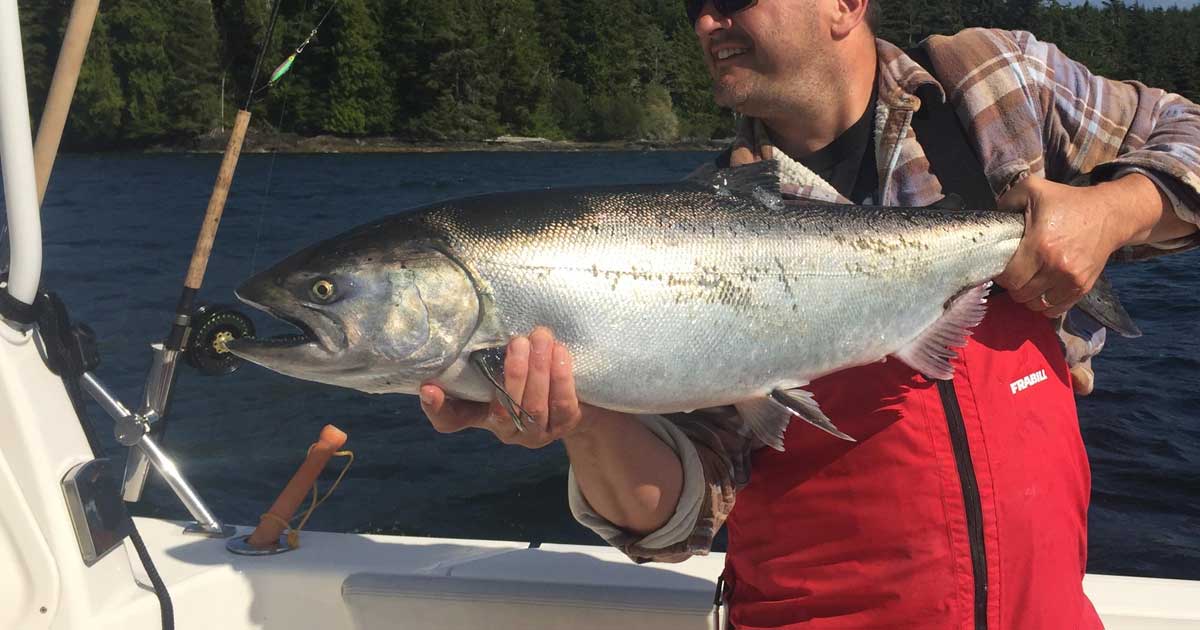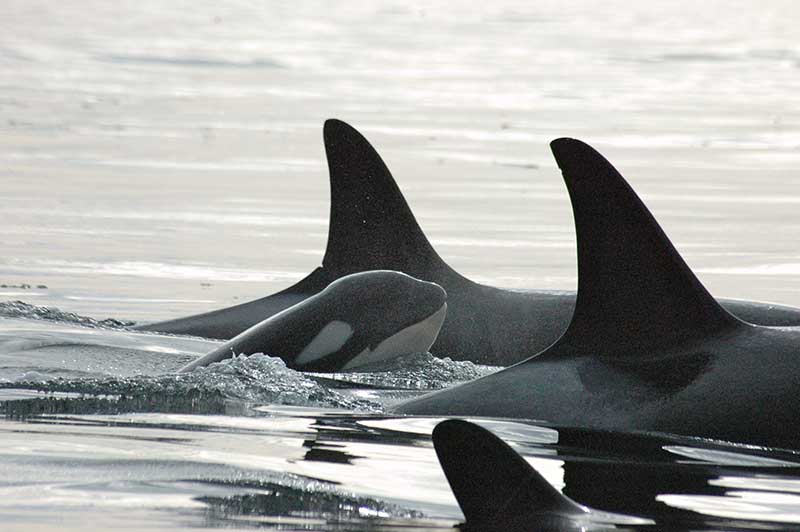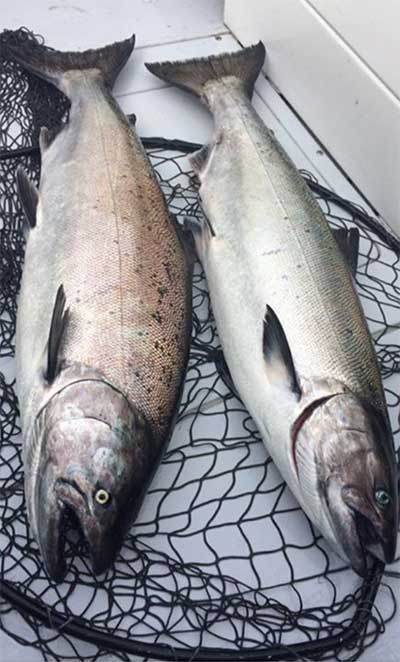
To state that there’s a measure of concern afflicting the marine recreational fishery in BC this spring would be a polite understatement. This acute sense of unease, especially amongst those who have some form of business interest in the fishery, is based on uncertainties about the course that management of Chinook salmon might take over the next short while.
As a generalization the principle cause of this is the declining health and abundance of Chinook throughout much of their range between California and Alaska. There are exceptions like the east coast of Vancouver Island stocks in recent years, but several previously productive stock aggregates from large watersheds like the Fraser, Skeena and Nass are experiencing serious declines that DFO wants to reverse.
Given that these fish are found across much of the coast, the challenge to lowering harvest of stocks of concern while sustaining fisheries is considerable. And overlaid on this, at the bottom end of Vancouver Island and over to the Fraser River mouth, is the additional challenge to secure more Chinook as prey, and a less noisy environment to hunt them in, for the endangered Southern Resident Killer Whale (SRKW) population. (Also see: https://www.whaleresearch.com/orca-population)

Those representatives of the recreational fishery working through the volunteer Sport Fishing Advisory Board (SFAB), the community-based process by which DFO consults on issues with the recreational fishery, knew going into this winter that there would be challenging discussions around future Chinook management.
However, in southern BC there was some expectation that two processes in particular would take place before substantive change from the current regulatory regime was implemented.
 The first is the completion and unveiling of the SBC Chinook Strategic Planning Initiative, something in development for several years now and intended to be an overarching management construct to guide Chinook and the fisheries that depend on them to a better place. Secondly, the Committee on the Status of Endangered Wildlife in Canada (COSEWIC) will be undertaking an assessment of 27 Chinook stocks in southern BC starting in 2019, with the results expected to be released in 2022.
The first is the completion and unveiling of the SBC Chinook Strategic Planning Initiative, something in development for several years now and intended to be an overarching management construct to guide Chinook and the fisheries that depend on them to a better place. Secondly, the Committee on the Status of Endangered Wildlife in Canada (COSEWIC) will be undertaking an assessment of 27 Chinook stocks in southern BC starting in 2019, with the results expected to be released in 2022.
Amongst those who have been paying attention to these things, barring a miraculous region-wide turn around in the status of Chinook, there was an understanding that the outcomes from these initiatives might not be so wonderful.
But there was also a sense we had some time to prepare for a different reality, for example, by planning to move to a selective mark fishery for Chinook in order to reduce the exploitation rate (ER) on wild stocks.
However all that changed at the beginning of March with the release by DFO of the draft Salmon IFMPs (Integrated Fishing Management Plans), one each for the northern and the southern parts of the BC coast. Contained in each was a section of highlighted text describing the approach DFO intends to take for Chinook management in the coming year.
The objective is to lower from current levels the ER on stocks of concern by 25–35%, along with the briefest outline of management measures under consideration to achieve this goal–time/area restrictions, maximum size limits, changes to retention limits, or other measures.
All of a sudden, in a few short weeks, the recreational fishery has arrived at a place it thought it might be several years from now, but with no chance to plan and help develop a different management regime.
One thing that the recreational fishery needs other than fish to catch is some certainty of opportunity. It simply can’t survive, never mind prosper, in a fast-changing regulatory environment. This isn’t the first time our fishery has found itself in this situation. In late May 1996, DFO announced the non-retention of Chinook by all fisheries along the west coast of Vancouver Island and around Haida G’waii, followed exactly two years later by the infamous region-wide “zero mortality objective” for coho.
The negative socio-economic consequences of these initiatives were out of all proportion to the fish saved, and as the fishery slowly worked with the department in subsequent years to develop less draconian measures to achieve the desired conservation benefits, there was some hope that DFO had learned the lesson that it needs to control the messaging to the public at large in a way that doesn’t create uncertainty.
Perhaps the department had understood the critical importance of this at some point, but it is now proving the time-worn maxim that those who don’t know (or can’t remember) their history, are certain to repeat it.

Gary Van Kooten
Aided by irresponsible social media usage and unwise feature stories in mainstream media—designed to promote readership and nothing else—the rumour mill has gone crazy, presenting a very damaging picture of BC as a place to go fishing.
Considering the objective, it is simply irresponsible to announce in March “the department is seeking input from First Nations and other stakeholders on specific measures that could achieve the desired reductions.”
This for a summer season that will be underway in two months and for which there are already substantial commitments by both visitors and service providers based on an expectation of opportunity that now almost certainly won’t be realized on many parts of the coast.
There is real damage being done to the future reputation of the recreational fishery in BC. The business infrastructure is paying big time for DFO’s lack of preparedness in providing a meaningful consultation and planning schedule to develop measures that would sustain the fishery, while at the same time being responsive to a serious conservation imperative.
Additional Resources:
SRKW Discussion Paper – Sport Fishing Institute of BC
Visit the Store
$34.99
$34.99
Featured Catch

Joel Unickow halibut (Photo: Rob Frawley Lucky Strike Sportfishing Tofino)







